|
Sample of installed systems:
|
1 kW array on organic farm:
Here is an installation we did using 6 BP 175 watt modules for an off grid farm. It uses BP 175 watt modules, an Outback FX3524 inverter, an outback 60 amp MPPT controller and 24 volts of gel type battery. The scope trace shows how clean the output is from the inverter. Pure sine wave inverter output is usually cleaner and more consistant than power from the utility!
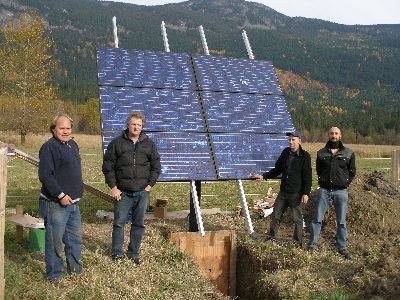
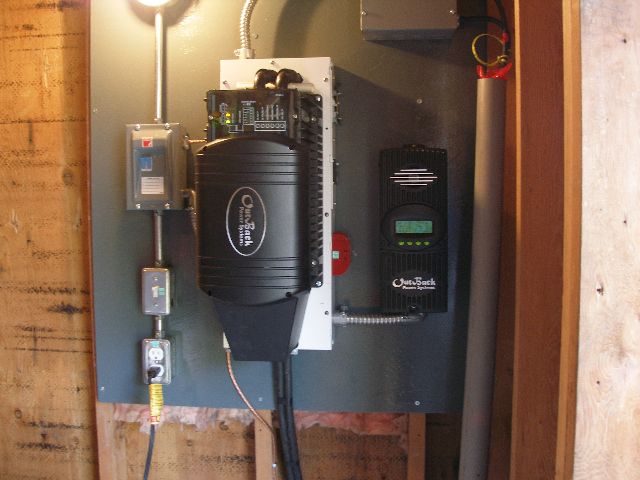
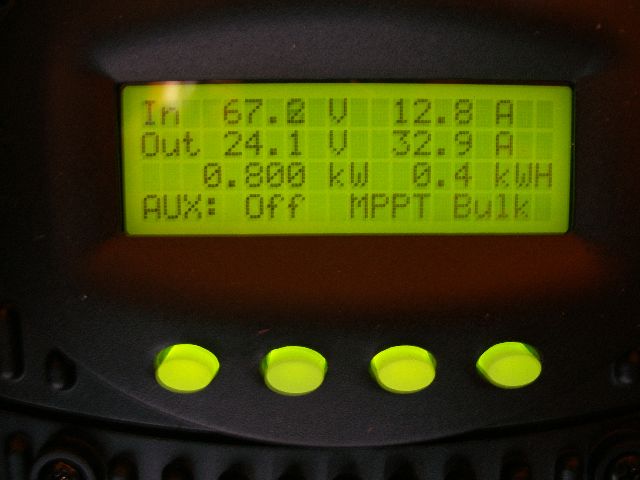
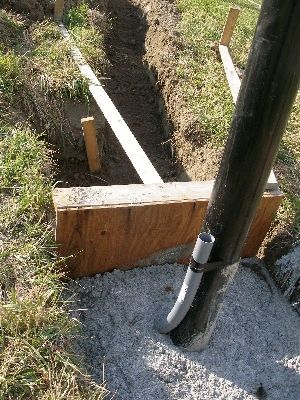
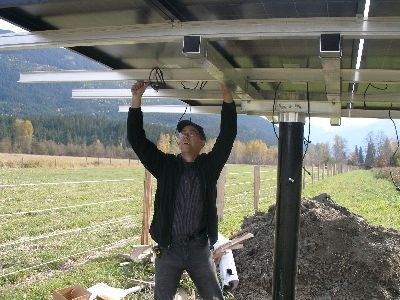
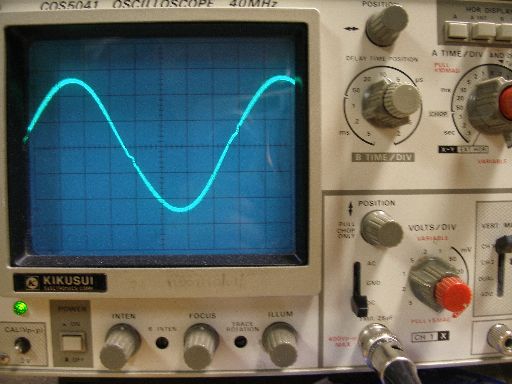
|
Cleaning up old systems:
We run into some pretty gnarly systems that were done long ago with minimal cost and little experience. These sites can be pretty dangerous, often with a lack of circuit protection breakers, exposed terminals and sloppy under sized wiring. When it's time upgrade, the intent is to bring it up to a high standard that is both safe and practical and as close to code as is possible considering what there is to work with. Here are some examples of what can be done to improve old systems that have been neglected. Note, there is a mix of AC and DC wiring shown here. AC wiring is generally left to the owner or some other contractor.
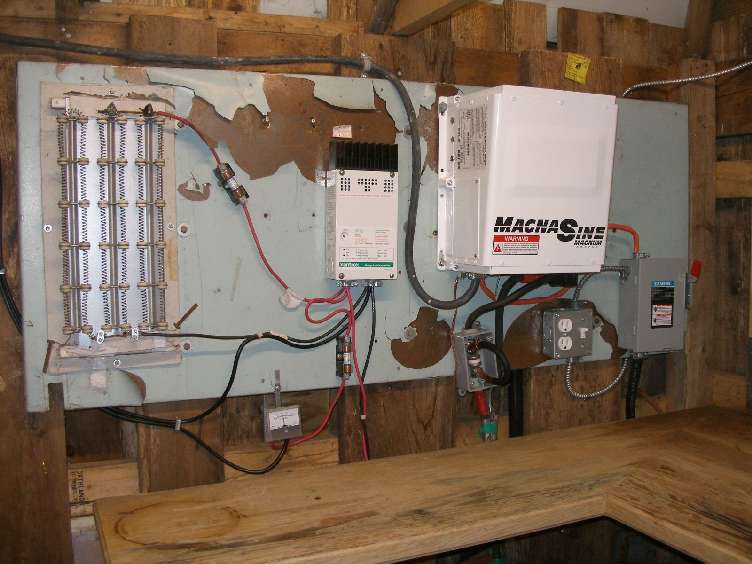
Before the rebuild
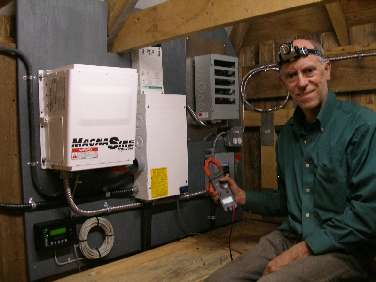
After the rebuild
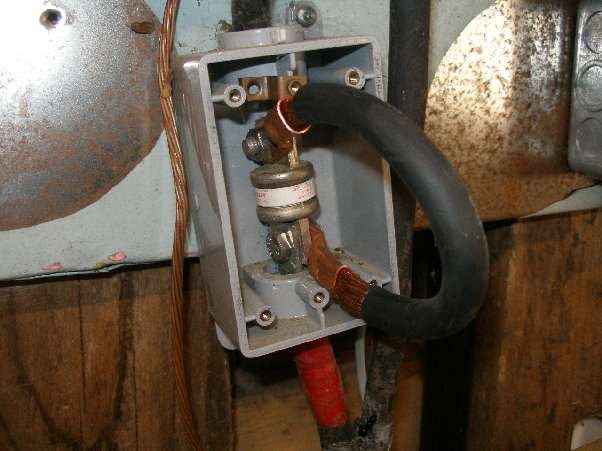
Do not ever do this!
| | |
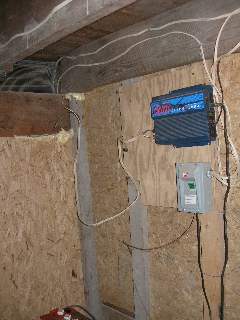
Before starting to tidy up
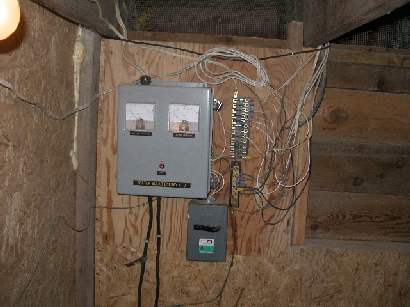
Lots of loose DC wires
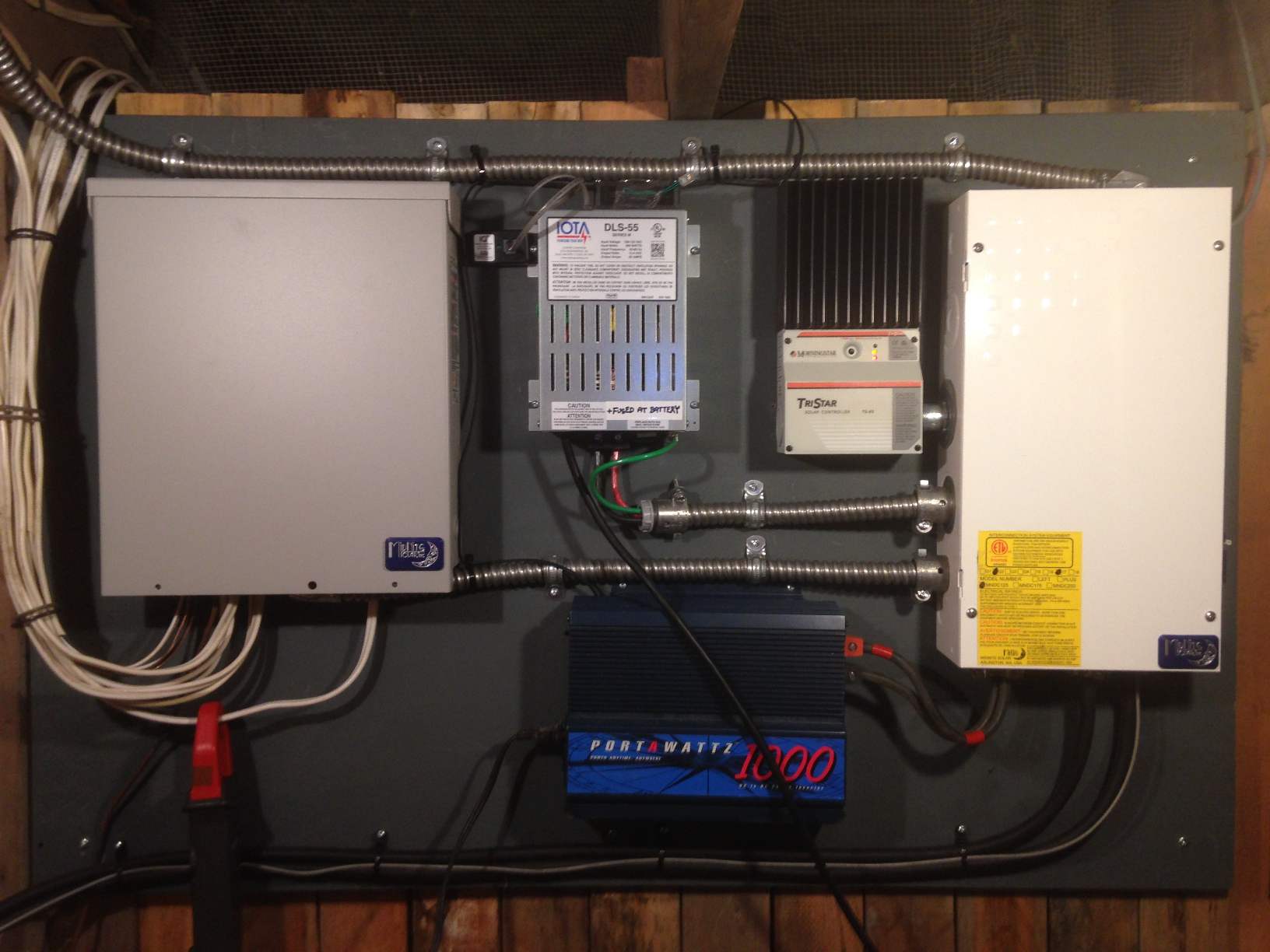
After rebuilding safely
| | |
|
Combination Solar, micro hydro and wind power:
This project was an extensive upgrade to an existing system that had been in operation for over ten years. However, the 300 watt solar array was far too small to supply sufficient battery charging for much of the year. This project was in three stages. First, we added 700 watts of new PV in the form of four 175 watt BP modules on a custom designed rack that would holt both the old and new modules. This was all fed to an Outback maximum power point tracking regulator.
Second, we installed an entire micro hydro system, capable of producing up to 35 amps at 28 volts for about 1 kW. See the DC Systems page for more details.
Third, the old batteries were replaced with a new set of 500 amp hour, 2 volt cells. In addition, a new 3500 watt sine wave inverter and all necessary switching, regulation and protection completed the upgrade.
The existing 12 volt wind turbine and two of the old PV modules were left connected to the existing 12 volt battery. This is used for LED and other 12 volt lighting and small appliances, The 12 volt system can also be charged from the new inverter using an existing old Todd 50 amp charger.
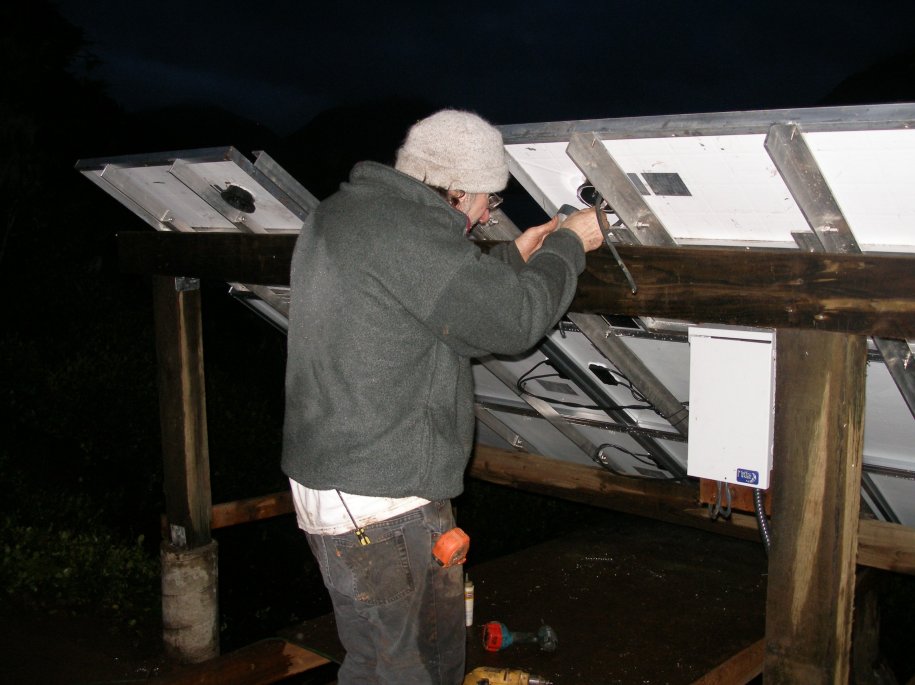
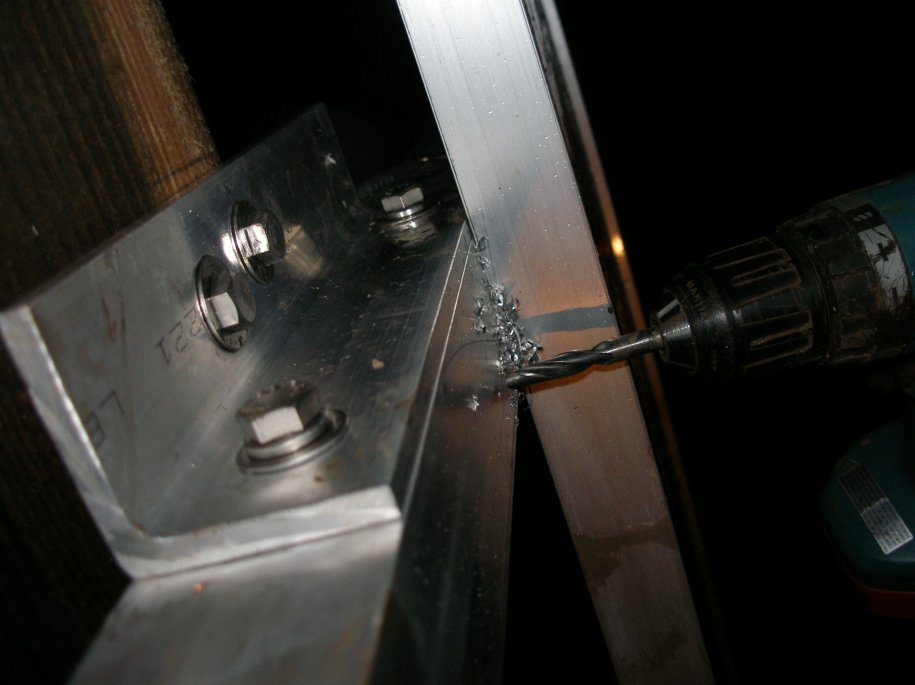
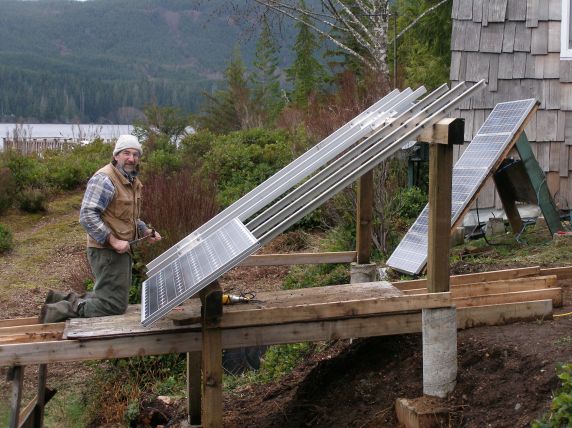
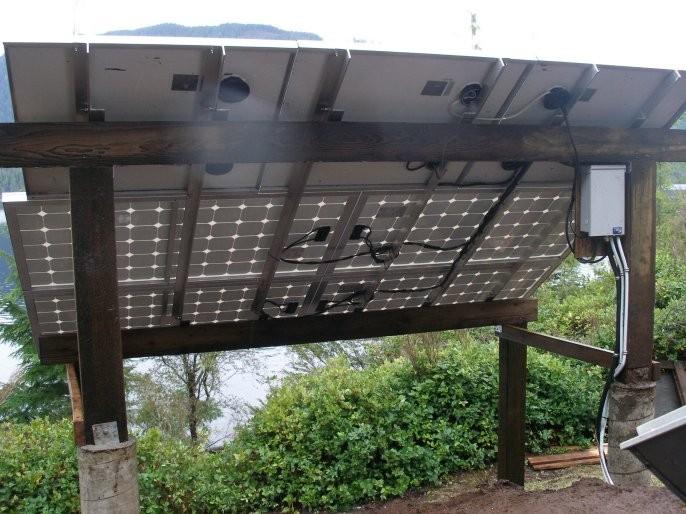
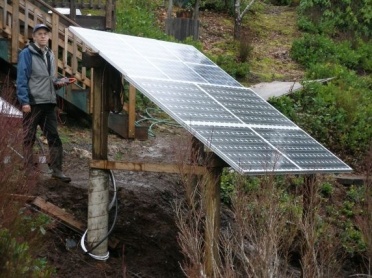
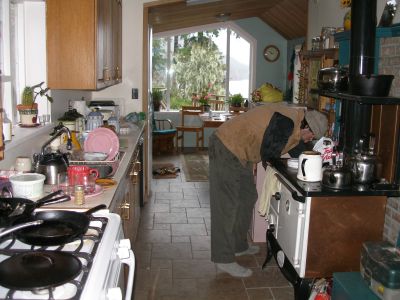
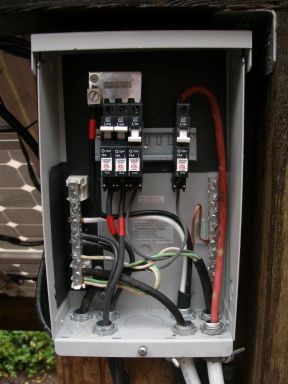
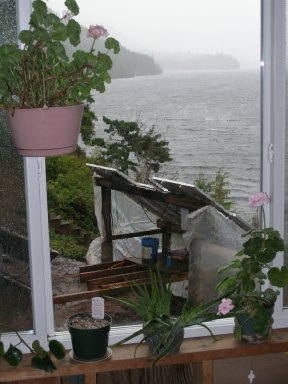
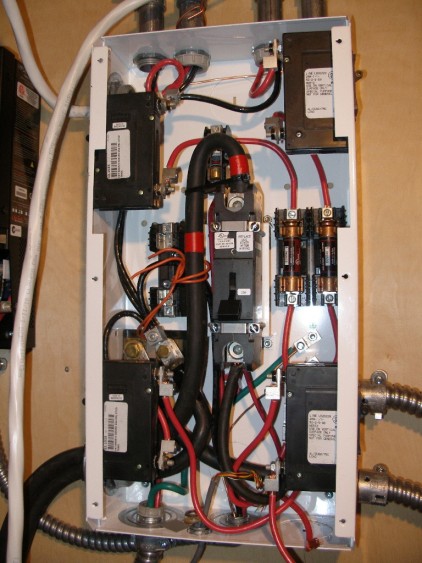
|
1200 Watt array on wood shed:
Another example of an upgrade to an existing solar installation. The new array more than doubled the solar capacity, and a small micro hydro provides battery charging in winter when the solar influx is very low.
A back up propane generator is available as well.
The equipment we installed in this project consisted of:
Six Sharp 235 watt modules, wired series parallel to produce a high DC voltage output at 12 amps.
Xantrex 60 amp MPPT solar controller to convert the high DC voltage to the 48 volt battery voltage.
Midnight combiner box with 15 amp breakers
As this was an add on to an already existing solar installation, a 1000 watt array was combined with this new array. Two Xantrex 6048 inverters were already installed, as was 1400 amp hours of battery.
This project was a joint work between Homepower and a local contractor, Galloway Electric out of Ucluelet BC.
Top row of photos show the mounting structure to the shakes, the mounting rails and the finished array.
Lower row shows the power line trench, the homes interior power by solar, and a delivery of solar panels.
|
|
500 watt roof top system:
|
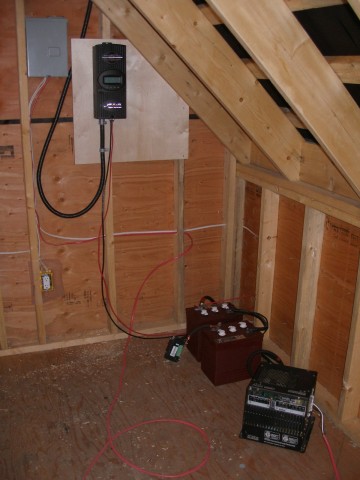
|
|
A small four module array installed on a cabin beside the Lilloette River. The array matches the roof slope of 45 degrees. Modules are BP 130 watt. The rack was prefabricated to fit to the corrugated steel roof panels. Water proofing was by means of standoffs to match the corrugation, with rubber washers and tar.
|
|
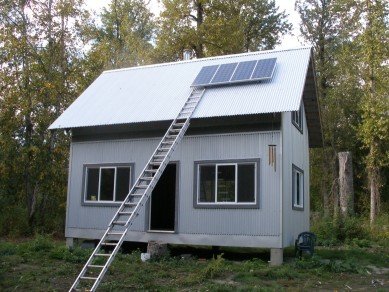
|
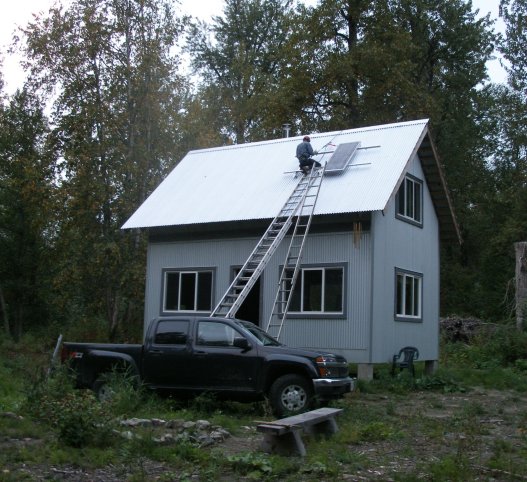
|
|
Modules are connected in series producing nominal 75 volts. An Outback MPPT regulator converts this to 12 volts DC for the two Trojan T225 batteries. When the cabin is completed, a new sine wave inverter will be installed. The cabin is wired for standard AC power, and DC LED lighting is used for high efficiency.
|
|
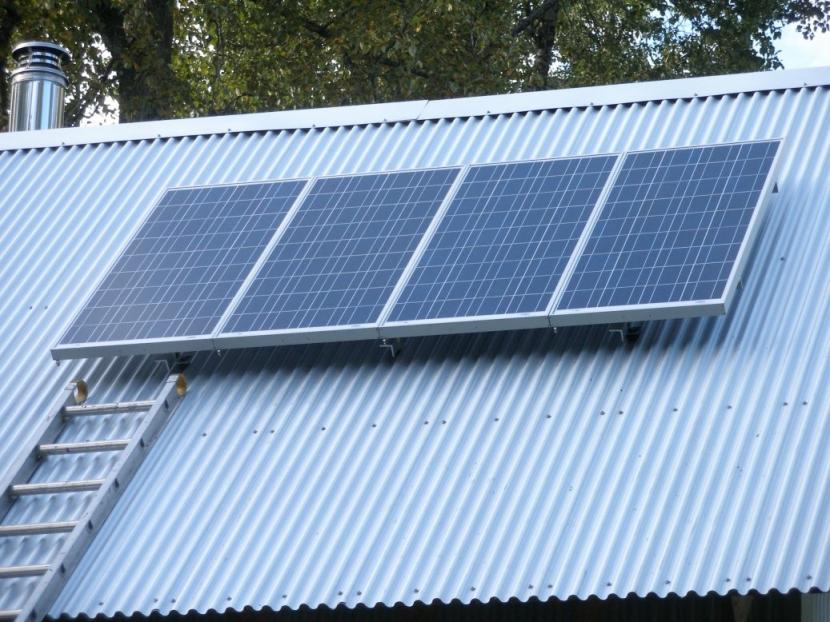
|
Solar powered remote water / oil tank level monitor.
This is a solar powered, radio based alarm system. It is used to detect oil in surface run off water at a fuel storage facility. When oil leaks in on top of the ground water, a detector enables the transmitter control circuits. Internal timers send alarm signals every few minutes, between which time the transmitter is powered down, thus battery demand is reduced. This is necessary in dark winter storm periods when light is at a minimum.
There are two remote transmitters and one receiver. The receiver has LED alarm lights visible in the control room. They later tied the receiver into the company SCADA system and computer network.
The radios operate in the 900 MHz ISM band and do not require a license in Canada or the USA. Range is dependant on line of sight. For a clear path, many miles is possible. In crowded and obstructed terrain, several hundred meters is typical.
This was custom built for the client. Other similar systems available if you have a need.
|
|
Small residential system:
|
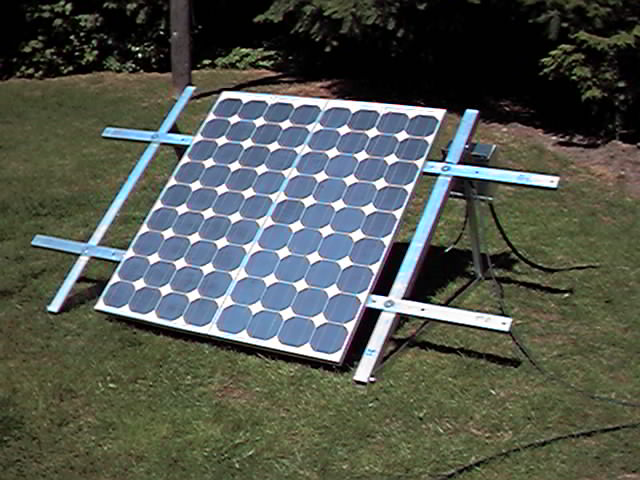
|
|
Part of a four module rack during construction. Rack tilt angle is adjustable to suit season. Array was built to fit on the edge of a flat roof. Snow will slide directly off over edge of roof. Modules shown are Siemens 80 watt. Rack will accomodate any make of module.
|
|
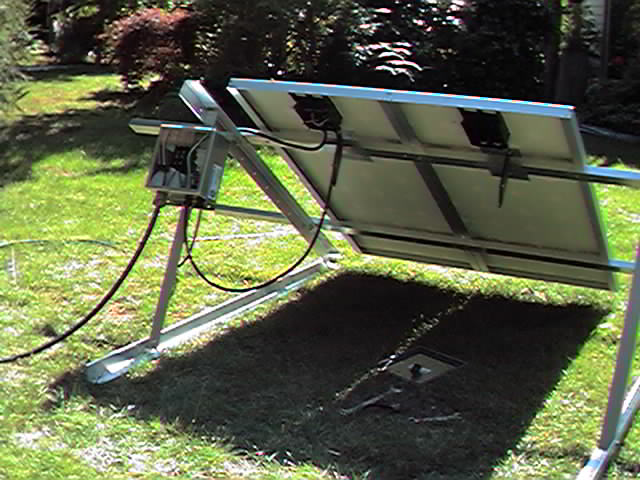
|
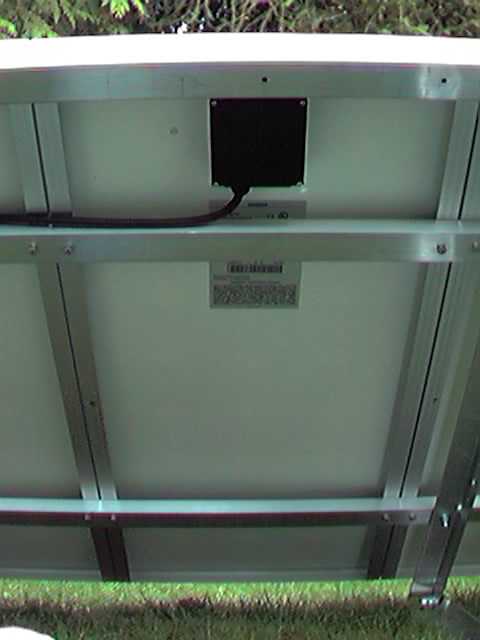
|
|
Modules are bolted on with all stainless steel hardware, using four points of attachment. Modules are in pairs forming a nominal 24 volt bank, each two banks are wired to the combiner box which houses individual fuses and disconnects. Power is carried to battery by # 6, 105 degree C, THHN wire in flexible water proof conduit.
|
|
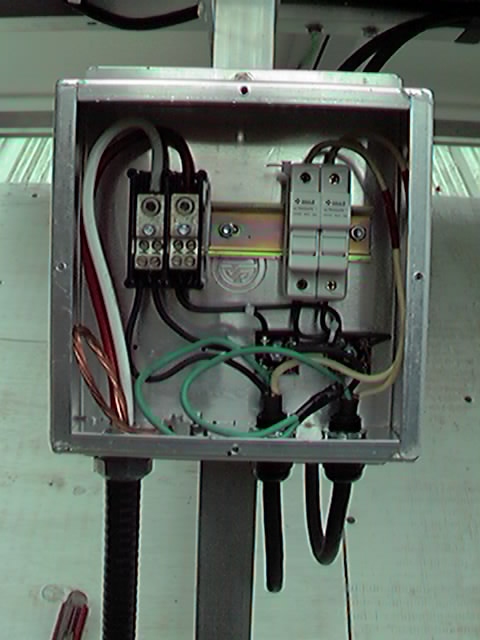
|
Solar Powered Outdoor Wireless Network Cameras:
Solar powered long range network camera:
This stand alone, internet linked camera monitors the intake of an hydro electric penstock and water supply at an elevation of 1500 feet, on a mountain 200 km north of Vancouver BC. The tower is mounted on an 8 foot deep by 4 foot diameter holding tank from which the pipeline exits. In addition to monitoring the water intake, the telemetry package also monitors the water level in the tank and radios the level data to the power house. Low water level will set off an alarm. The package is powered by a 20 watt BP module, charging a 12 amp hour gel cell. An internal controller can be set to transmit pictures at any desired time interval. Pictures can be sent via ftp and or email. A router feeds the signal into a Hughes Net satellite internet terminal. Long range, outdoor 'Tranzio brand' radios are used for the link. Protocol is 802.11G.
Complete made up packages are available from us here. Email to info@homepower.ca for more information. Different sized modules are also available depending on the solar influx. Yagi or dish or flat panel antennas available from 6 to 30 dB gain.
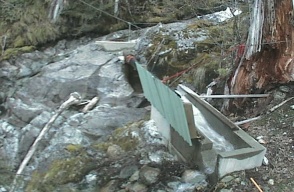 -----
-----

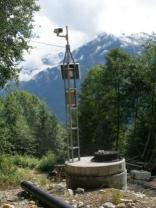 ----
----
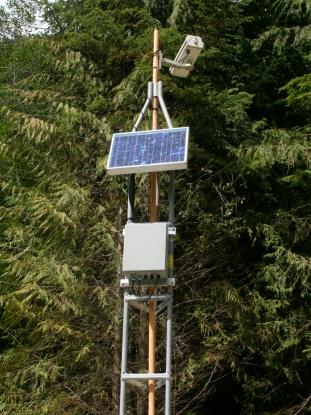
|
Contact Information:
Phone 604 - 465-0927
Email: info@homepower.ca
|
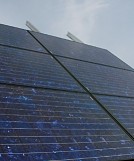
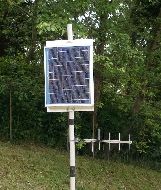
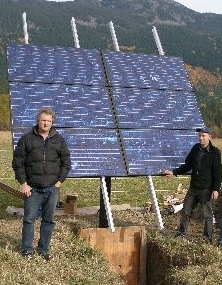





















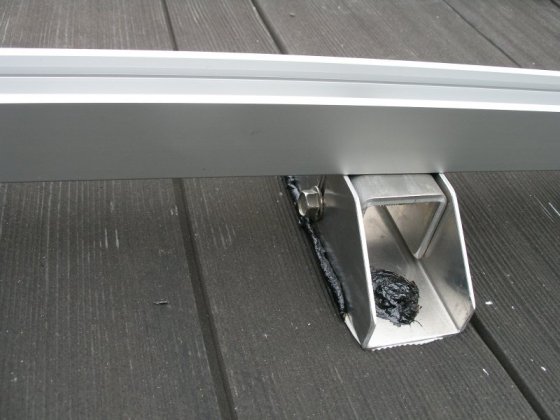
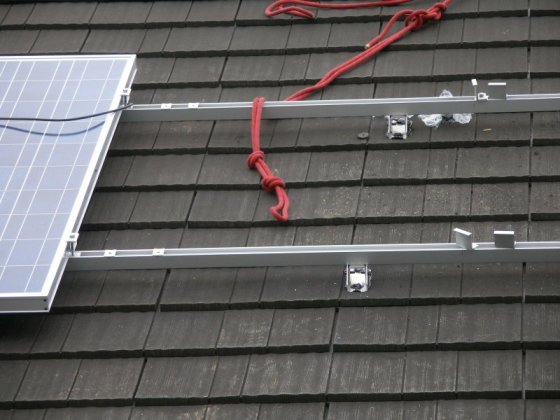
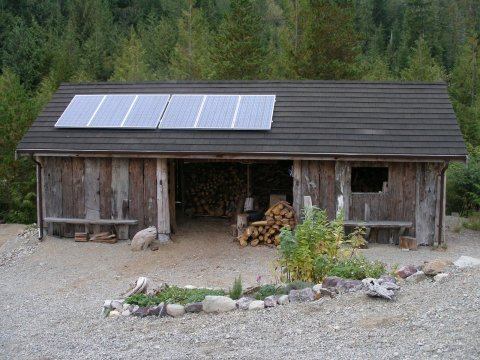
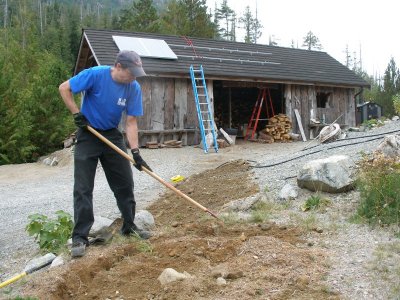

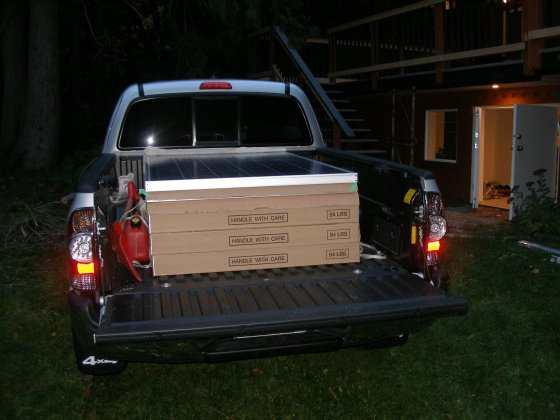




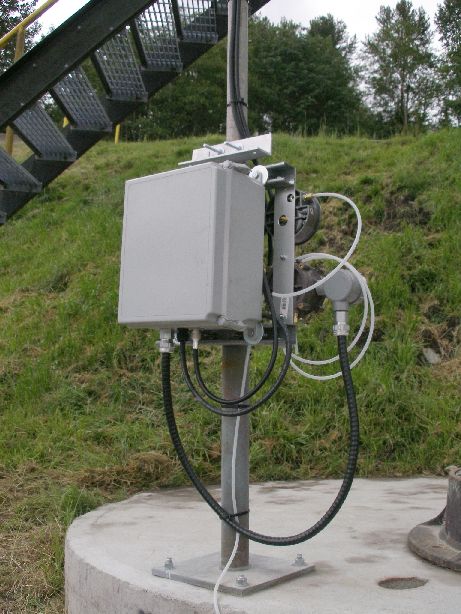
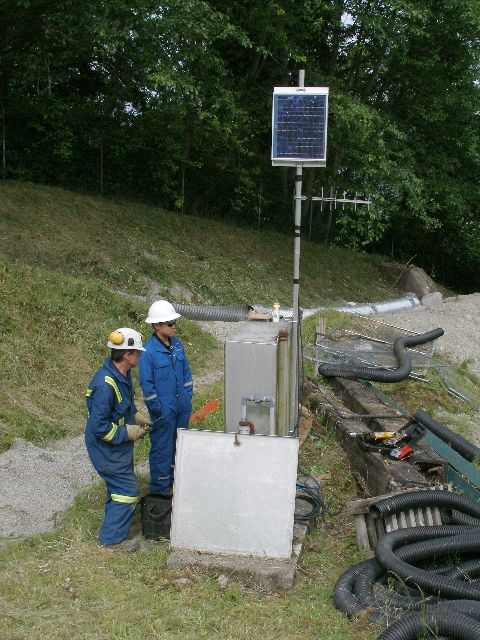
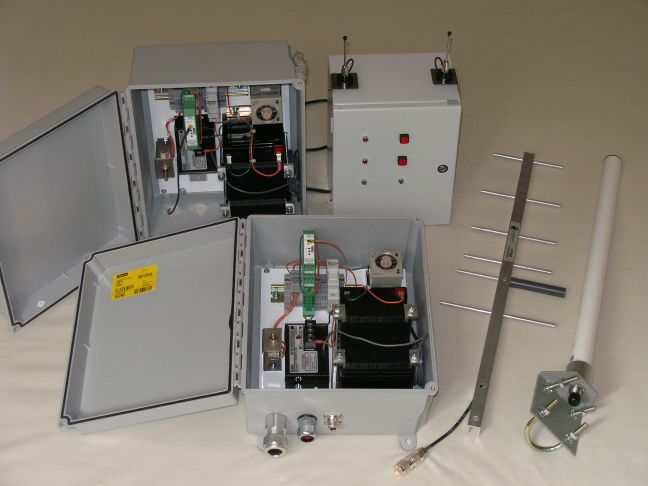
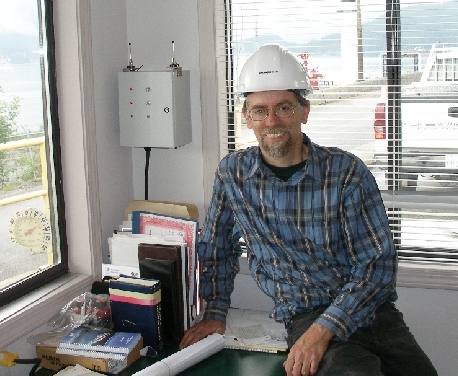
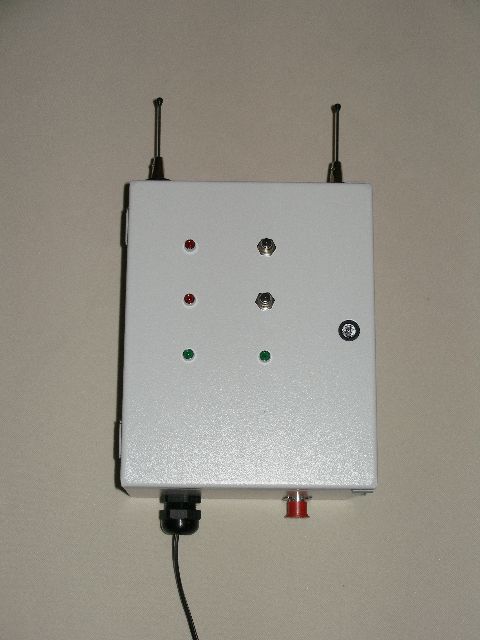




 -----
-----

 ----
----
